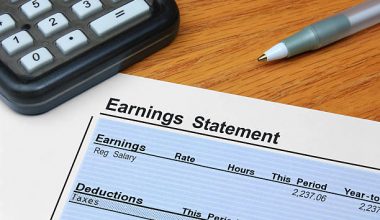Businesses need the right financing in order to continue expanding and thriving. Hence, businesses use a cash flow statement to track the changes in their cash over time. However, three divisions make up the cash flow statement, operating activities, investment activities, and financing activities. Which is why in any company’s financial statements, it’s crucial to understand what the actual financing activities are. These financing activities involve the flow of cash and cash equivalents between both the corporation and its financing options.
What Are Financing Activities?
Financing activities are transactions or corporate events that affect a company’s long-term debts. In other words, they are transactions involving investors and lenders that are used to fund the operations or growth of a company. These transactions are the third set of cash activities on the statement of cash flow.
Financing activities indicate how a corporation raises money from outside sources to fund its operations and expansion. For instance, a corporation that pays for its own plant development does not require financing since it can fund its operation. As such, there are no financing activities because the growth of such a company has left the equity and liability balances intact.
Stockholders and creditors are both always eager to see how well a company can use existing cash to fund operations and generate financing for future projects. And looking at the financing activities and cash flow statements reveals how flexible and stable a business appears in certain ways.
Understanding What Financing Activities Involves
An organization’s capital might come either from debt or equity financing. When a company takes on debt, it either takes out a bank loan or issues a bond and pays interest to lenders and stockholders for the funds it has borrowed.
If the company opts for the equity method, it will sell stock to investors in exchange for a portion of the company. These actions are implemented to enhance a company’s operations and strategic goals.
#1. Long-term Obligations and Liabilities
The issuance of debts, such as bonds, is a form of financing activity that includes long-term liabilities. A positive sum indicates that there’s an improvement in payable bonds and that money has been generated by the additional bonds issued.
A negative total indicates just a reduction in the number of bonds due. Also, it demonstrates that the funds were used to repurchase or recover the bonds due.
#2. Equity of Stockholders
In the financing activities section of the cash flow statement, an increase in the stockholder’s stock records is indicated as a positive total. It demonstrates that they are offering more money by issuing more stock.
Using all the cash to pay interest on a debt, to settle dividends to investors, to settle a debt, and repurchase stock recently issued on the other hand are all examples of negative statistics.
Examples of Financing Activities
Financing activities include both cash inflows and outflows from investors and lenders. Examples of cash flows from financing activities include the following
Positive Cash Flow
- A financial institution’s credit
- Bonds are issued.
- Treasury stock purchases
- Depository stock is available for sale.
- The new stock issue proceeds
- Cash Flow Problems
Negative Cash Flow
- Redeeming bonds
- Stockholders receive cash dividends.
- Credit card debt repayment.
Even though some of these activities may involve the usage of money, the cash flow statement merely records those events that have an impact on the company’s cash. Non-cash financing activities are activities that do not involve cash. These include debt conversion to common stock and the release of liabilities by the company.
Inflows -Raising Capital
#1. Equity Capital
Basically, this is the same as selling your equity to raise funds. The money is raised without any commitment to pay principal or interest and instead at the cost of ownership. It’s an influx that appears to be easy money on the surface but could be highly costly in the long run because you may wind up paying more interest than the current market rates due to your growing firm.
#2. Debt Financing
Offering long-term debt, such as bonds, is another approach to raising funds. Unlike equity financing, this does not dilute ownership but does bind the company to pay the specified amount and repay the money within the agreed-upon duration, which is usually 10 or 20 years.
#3. Donor contributions can also be used as part of the funding if the company is a non-profit.
Outflows-Return Capital
#1. Equity Repayments
Business owners, having amassed sufficient wealth, like to repurchase company shares, as a result, increasing their stake in the business. They can accomplish this in various ways, including buying equities on the open market, submitting an offer to sell, or recommending a repurchase.
#2. Debt Repayment
Businesses, like every fixed deposit, need to pay back the debt after a set length of time, as pledged at the time of issuing.
#3. Payment of Dividends
This is a technique by which businesses compensate and share profits or revenue with their respective investors.
Financing Activities in Cash Flow
Financing activities appear in the cash flow statement as the movement of money between a company’s owners and creditors. It focuses on the company’s capital raising and repayment processes (paying back investors). All stock issuance and sales, dividend payments in cash, as well as loan additions, are all part of the business or financing activities’ cash flow.
The money organizations get from raising capital is part of the cash flow from financing activities. These operations have an effect on the cash flow statement of the company, which shows the resulting inflows and outflows of funds. Likewise, a cash flow statement displays how much revenue a company generates and spends in a specific time period. In a cash flow statement, there are three main categories: investment, operating, and financing.
A company’s cash flow statement showing a positive or great number implies that more funds or revenue is coming in for the company. This raises the company’s asset value. On the other hand, a negative value shows that the company spends so much, making several payments, such as dividends to investors or probably long-term debt repayments.
Generally, companies reveal their cash inflows and outflows from the following sources as part of their financing activities on their cash flow statements:
- Borrowing and repaying short-term debts
- Borrowing and repaying long-term loans and liabilities
- Having stock in both standard and preferred companies Issuing a new certificate or repurchasing an old one
- Payments of cash dividends on their capital stock
When determining how often a company generates cash flow statements, you should consider the frequency of transactions. Normally, a weekly or month-to-month statement is appropriate for organizations with a high volume of cash flow. While for others, quarterly or yearly is more appropriate.
Cash Flow for Financing Activities
A company’s cash flow statements include a part called “cash flows from financing activities” (CFF), which reflects a company’s net cash flows from financing activities. In other words, a company’s cash flow from financing activities is the total amount of money it raises during a specific period of time.
There are several types of financial transactions that fall under the umbrella of financing. Payments of dividends, the issuing or repayment of liabilities, as well as capital lease commitments are all examples of financial activity. Typically, the cash flow statement reflects the issuance of debt or shares by companies in need of funding.
For investors, a company’s cash flow from financing activities also gives information about its financial stability as well as how well such a company is maintaining its capital structure.
Understanding Cash Flow from Financing Activities
This component of the cash flow statement is critical for accountants, financial experts, and investors alike to grasp. Since this component of the cash flow statement shows how a firm finances its activities, it typically includes variations in all accounts relating to debt and equity.
Hypothetically, financing activities consist of the following:
- Issuance of equity
- Payment of dividends
- Full equity repayment
- Repayment of debt
- Issuance of debt and liabilities
- Lease payments for capital/finance
Cash Flow from Financing Activities: How Do You Calculate It?
To start with, you must take into account a company’s balance sheet and cash outflows and inflows when analyzing its cash flow financing. An increasing equity capital over time indicates that more shares have been issued, which results in a cash inflow. On the other hand, if equity capital decreases over a period of time, it signals a cash outflow, thereby suggesting a share repurchase.
It is also a cash outflow if the debt capital of an organization falls over time, much like short-term and long-term loans. Whereas, if an organization’s long-term or short-term debt increases, it indicates that it’s clearing the additional debt, resulting in an increase in cash flow.
It is worth noting that, since it has nothing to do with finance, CFF analysis does not reflect changes in retained earnings.
Accountants usually keep track of payments for interest and dividends as well as changes to a company’s capital structure. In the company’s income statement or balance sheet, you can always see these transactions on the debit side.
These are the steps to compute CFF after distinguishing and identifying these items:
- Flows of funds from financial activities (Addition)
- Financing-related cash outflows (Addition)
- Inflows and outflows of cash (subtraction)
The formula for calculating CFF is as follows:
CFF = Cash Flows from Equity and Debt Issuance – (Dividends + Interest + Stock Repurchase + Debt Repayment + Lease Repayment + Dividend Distribution)
Conclusion
Basically, a company’s financial actions reveal tidbits about its financial health and goals. It also provides important information to financial backers regarding the company’s financial health. If the company’s cash flow from financing activities is positive, there is a certainty of a rise in the company’s asset base.
Financing Activities FAQs
What Financing Activities can cause negative cash flow transactions?
- Dividends
- Repurchases of company stock
- Getting out of debt
Related Articles
- CASH FLOW: All you need to know, Simplified!!! (+ Free format)
- SMALL BUSINESS FUNDING: Top New 15+ Options in 2023 (+ Free Tips)
- Cash flow management: Best ways to manage your cash flow effectively
- Yield: Definition, How to Calculate with Examples, & Types
- EQUITY FINANCING: Types, Sources, Advantages & Disadvantages





